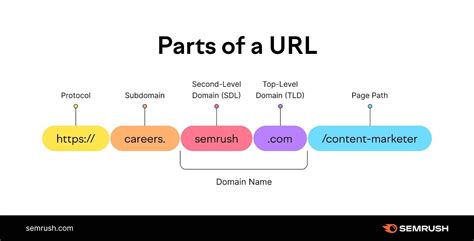root domain vs top level domain|top level domain servers : Clark The key difference between a top-level and a root domain is that a TLD is a part of the domain name system, whereas a root domain is a part of the web hosting system. In that sense, TLDs are used to classify and . Learn how to schedule a group appointment for passport renewal in the Philippines, with easy steps and helpful tips.

root domain vs top level domain,Simple. The root nameserver(s)= server the "." domain. The TLD servers serve the top level domain, DIRECTLY BELOW THE ".". So, for example, ".de" is the german country domain. DNS servers managed by DE-NIC. The "." root name servers .The key difference between a top-level and a root domain is that a TLD is a part of the domain name system, whereas a root domain is a part of the web hosting system. In that sense, TLDs are used to classify and .Now let's look into some key differences between the Root Domain and top-level domain: The Root domain is the core address that represents your entire website. Top .

A root domain is the highest-level domain in a website’s hierarchy and can impact your website’s visibility in search engine rankings. For instance, “namehero.com” .root domain vs top level domain Root domains refer to the primary, brandable portion of a website address and include the top-level domain. Some common synonyms used for root domains .

To better understand the explanations provided above, let’s look at the specific differences among the Top-level Domains, Second-level Domains, and Third-level Domains (Sub . Top-level domains indicate your site’s purpose and help attract your target audience. If you want to target users by country, you may need a country-code top-level . Top-level domain (TLD) name is what comes after Second-level domain name. It represents the first stop after the root domain. In simpler terms, a TLD is . TLD (Top-Level Domain) A TLD, or Top-Level Domain, is the last segment of a domain name, found immediately after the final dot. It represents the .The DNS Root Server extracts the Top Level Domain (TLD) from the user’s query. The root nameserver responds by directing the recursive resolver to a TLD nameserver, based on the extension of that domain (.com, .net, .org, etc.). There are 13 root servers worldwide, indicated by the letters A through M, overseen by a nonprofit called the .Beispiele für Root Domains. Wie bereits erwähnt, kommt die Root-Domain nach dem „www“ und enthält die Top-Level-Domain-Endung, wie .com oder .org. Beispielsweise ist in der site-Adresse .
The root domain of the Internet (sometimes called the zero-level domain) is serviced by the root servers of the domain name system, which are located in different countries around the world. To .
The DNS hierarchy is like an inverted tree, with the root domain at the top and the subdomains at the lower levels. The root domain is represented by a dot (.) and it contains all the TLDs. For example, the domain name www.example.com has three levels: the root domain (.), the top-level domain (.com), and the second-level domain .
What are the differences between Root Domain vs. Top Level Domain? Now let's look into some key differences between the Root Domain and top-level domain: The Root domain is the core address that represents your entire website. Top Level Domains are the endings of domain names such as .com, .net, or .org. Root Domains are the first .
Root Domain is the highest hierarchical level of a site and is separated from the Top Level Domain by a dot (e.g. rootdomain.com). The term root domain means different things depending on if you’re talking about the Internet as a whole or about your website. Technically, the root domain is the highest hierarchical level of the Internet, even .top level domain servers A root domain refers to everything between the www at the beginning of the website address and the further path to specific web pages. It includes both the second-level domain and the top-level domain (.com, .org, etc.). For example, in the website address “www.Atom.com,” the root domain would be “Atom.com.”.root domain vs top level domain top level domain servers A root domain refers to everything between the www at the beginning of the website address and the further path to specific web pages. It includes both the second-level domain and the top-level domain (.com, .org, etc.). For example, in the website address “www.Atom.com,” the root domain would be “Atom.com.”.
For example, in the URL “www.example.com,” “example.com” is the root domain. It serves as the foundation for all subdomains and subsequent URLs within a website. The root domain is denoted by the suffix at the end of a website’s URL, such as “.com,” “.org,” or “.net.”. These TLDs categorize websites based on their purpose .
root domain vs top level domain|top level domain servers
PH0 · what is a root domain
PH1 · top level domain vs subdomain
PH2 · top level domain servers
PH3 · root domain example
PH4 · Iba pa